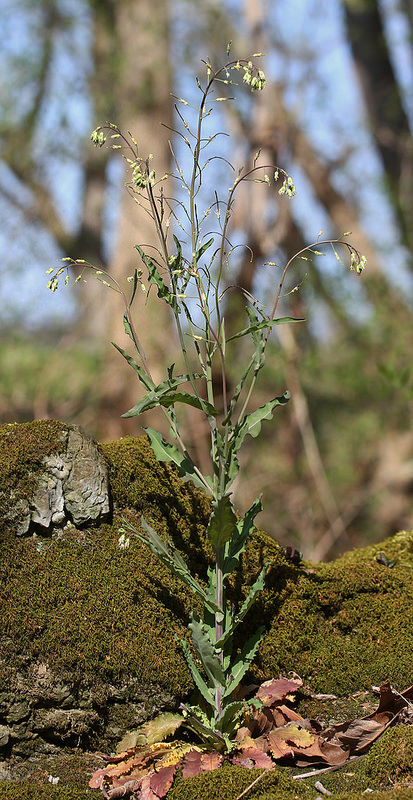Map Snapshot













194 Records
Seasonality Snapshot
Use of media featured on Maryland Biodiversity Project is only permitted with express permission of the photographer.
Smooth Rockcress in Allegany Co., Maryland (4/28/2018).
View Record Details
Media by
Frode Jacobsen.
Smooth Rockcress blooming in Kent Co., Maryland (4/27/2014).
View Record Details
Media by
Bill Hubick.
Smooth Rockcress in Washington Co., Maryland (4/21/2013).
View Record Details
Media by
Jim Brighton.
Smooth Rockcress in Washington Co., Maryland (4/25/2016).
View Record Details
Media by
Jim Stasz.
Smooth Rockcress in Allegany Co., Maryland (4/10/2017).
View Record Details
Media by
Kimberly Booth.
Smooth Rockcress blooming in Montgomery Co., Maryland (3/23/2012).
View Record Details
Media by
Fritz Flohr Reynolds.
Smooth Rockcress in Garrett Co., Maryland (5/2/2020).
View Record Details
Media by
Mark Eanes.
Smooth Rockcress growing in Garrett Co., Maryland (5/3/2015).
View Record Details
Media by
Jim Stasz.
Smooth Rockcress in Allegany Co., Maryland (4/18/2020).
View Record Details
Media by
Mark Eanes.
Smooth Rockcress in Frederick Co., Maryland (3/29/2023). (c) botanygirl, some rights reserved (CC BY).
View Record Details
Media by
botanygirl via iNaturalist.
Smooth Rockcress in Harford Co., Maryland (5/1/2018).
View Record Details
Media by
Kirsten Johnson.
Smooth Rockcress in Washington Co., Maryland (4/8/2017). (c) Bill Hubick, all rights reserved.
View Record Details
Media by
Bill Hubick.
Smooth Rockcress in Cecil Co., Maryland (6/24/2014).
View Record Details
Media by
Jim Stasz.
Smooth Rockcress blooming in Garrett Co., Maryland (4/25/2014).
View Record Details
Media by
Boyer and McDowell.
Smooth Rockcress in Allegany Co., Maryland (4/4/2017).
View Record Details
Media by
Kimberly Booth.
Smooth Rockcress in Montgomery Co., Maryland (4/7/2019). (c) tlit46, some rights reserved (CC BY-NC).
View Record Details
Media by
tlit46 via iNaturalist.
Smooth Rockcress in Montgomery Co., Maryland (4/7/2019). (c) tlit46, some rights reserved (CC BY-NC).
View Record Details
Media by
tlit46 via iNaturalist.
Smooth Rockcress in Washington Co., Maryland (4/8/2020). (c) Dave, some rights reserved (CC BY-NC).
View Record Details
Media by
Dave via iNaturalist.
Source: Wikipedia
| Borodinia laevigata | |
|---|---|

| |
| Scientific classification | |
| Kingdom: | Plantae |
| Clade: | Tracheophytes |
| Clade: | Angiosperms |
| Clade: | Eudicots |
| Clade: | Rosids |
| Order: | Brassicales |
| Family: | Brassicaceae |
| Genus: | Borodinia |
| Species: | B. laevigata
|
| Binomial name | |
| Borodinia laevigata (Muhlenberg ex Willdenow) Al-Shehbaz
| |
| Synonyms | |
|
List
| |
Borodinia laevigata is a species of flowering plant in the mustard family known by the common name smooth rockcress.[1] It is native to many areas of the eastern United States and Canada, where it grows in calcareous rocky woods and bluffs.[2] It is moderately common throughout its range, although it is absent from the southeastern coastal plain and the far north.
This species is a biennial herb growing from a single stem. It flowers in early spring and has persistent fruit. It is differentiated from other species by its auriculate-clasping leaves, short white petals, and glaucous stem.
This species was moved to the genus Borodinia in 2013 following a genetic analysis.[3]
References
[edit]- ^ "NatureServe Explorer 2.0". explorer.natureserve.org. Retrieved 2023-09-12.
- ^ "Boechera laevigata in Flora of North America @ efloras.org". www.efloras.org. Retrieved 2023-09-12.
- ^ "Alexandria et al | Systematic Botany 38, no. 1 (2013): 192–209. | JSTOR". Retrieved 31 March 2023.

















